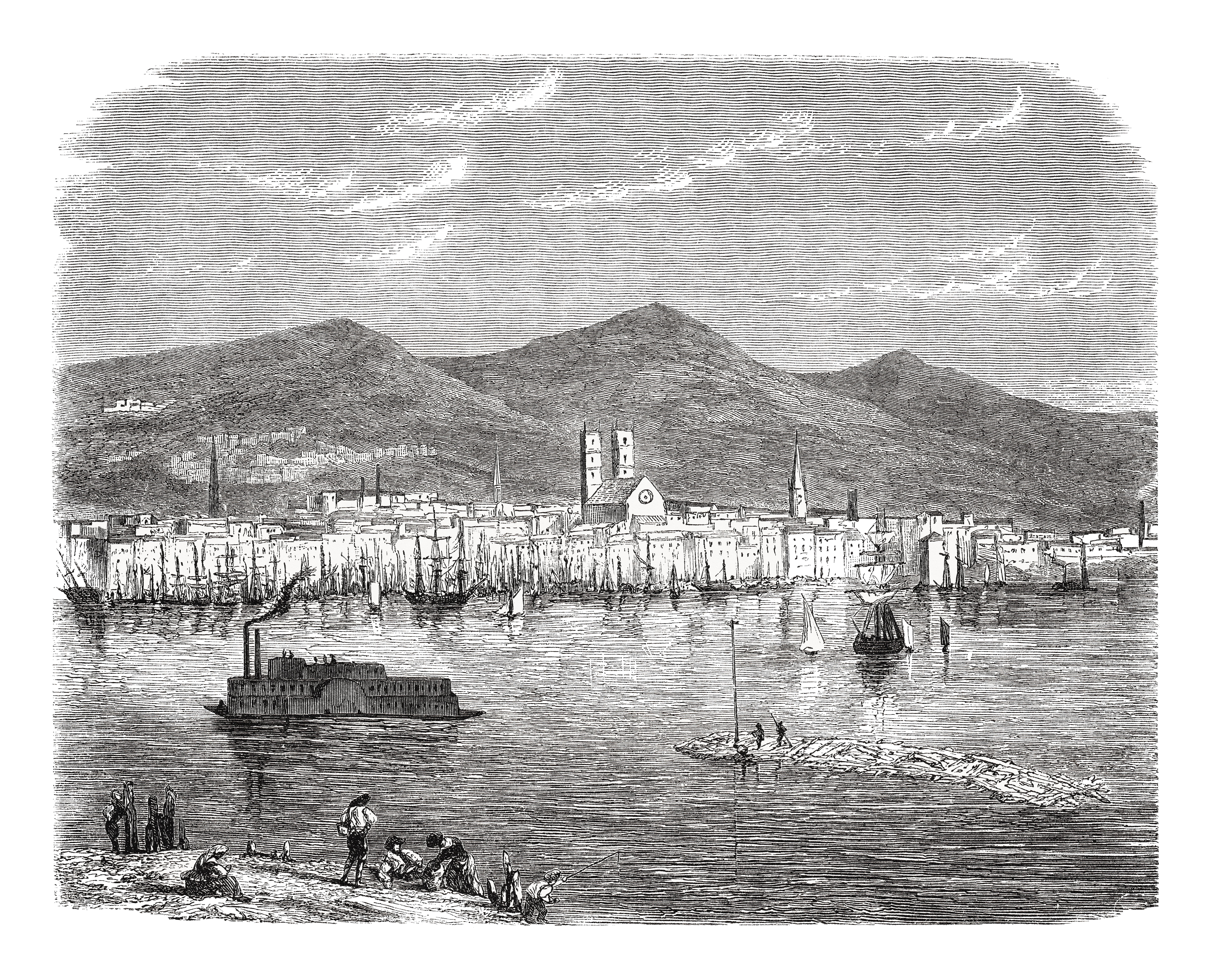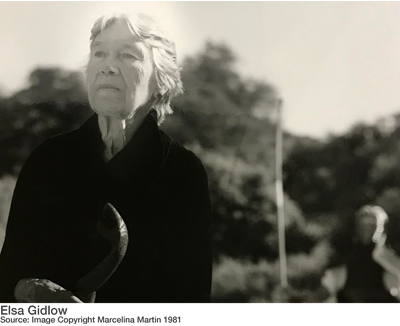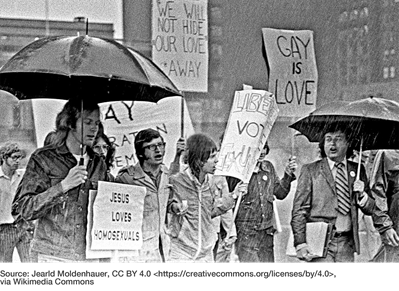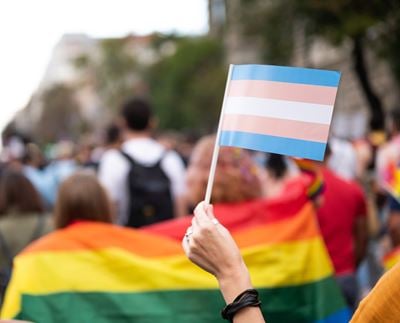Key Moments in Canadian 2SLGBTQIA+ History
Content warning: This Historical overview contains subject matter on the oppression of and violence toward 2SLGBTQIA+ individuals throughout Canadian history.
The fight for 2SLGBTQIA+ equal rights in Canada has a long history. It tells the story of the many thousands of 2SLGBTQIA+ Canadians who, throughout the country’s history, have fought to live freely and be able to express their gender, sexual orientation, and love unabashedly. Within each story there are dozens more. While this struggle is ongoing and has had many moments of uncertainty and setbacks, the 2SLGBTQIA+ community has seen great progress through policy and legal amendments and greater societal acceptance.
Indigenous Peoples living on Turtle Island, or what European settlers eventually called North America, had many genders and practiced their beliefs about gender and sexual orientation for thousands of years. They established numerous terms for different genders, reflecting the diversity of the people and languages across Turtle Island. The commonly used term Two-Spirit, coined in 1990 by Elder Myra Laramee at the third annual Intertribal Native American/First Nations Gay and Lesbian conference in Winnipeg, is the English translation of the Anishinaabemowin term niizh manidoowag, meaning a person who embodies both a masculine and feminine spirit.
In the 1500s, Europeans traveled to North America having heard about the continent’s natural resources and were in search of opportunities for commercial trade with the First Nations. By the beginning of the 1600s, the Europeans had colonized much of Turtle Island and continued to expand their presence, taking over more of the Indigenous peoples’ land. As colonization expanded at an increasing pace throughout the centuries, missionaries and colonial officers prosecuted Indigenous people for expressing alternate genders and sexual orientations. Despite this, Indigenous communities preserved their beliefs and maintained their Two-Spirit and other non-conforming identities.
 By the 1800s, colonial Canadian society continued to restrict and condemn alternate views on gender and sexual expression in Canada. In 1838, George Herchmer Markland, a member of the Legislative Council of Upper Canada, or modern-day Ontario, was forcibly removed from his position as punishment for being romantically linked to other men. In the years following, the Canadian Criminal Code enforced capital punishment upon any persons who were engaged in same-sex relationships. This form of punishment was substituted in 1869 with a maximum lifetime jail sentence, and subsequently replaced by Gross Indecency laws, which were used to shame and humiliate those involved in same-sex relations.
By the 1800s, colonial Canadian society continued to restrict and condemn alternate views on gender and sexual expression in Canada. In 1838, George Herchmer Markland, a member of the Legislative Council of Upper Canada, or modern-day Ontario, was forcibly removed from his position as punishment for being romantically linked to other men. In the years following, the Canadian Criminal Code enforced capital punishment upon any persons who were engaged in same-sex relationships. This form of punishment was substituted in 1869 with a maximum lifetime jail sentence, and subsequently replaced by Gross Indecency laws, which were used to shame and humiliate those involved in same-sex relations.
 By the 20th century, the push toward the acceptance and acknowledgement of the 2SLGBTQIA+ community transformed into an underground movement. In 1918, the first Canadian 2SLGBTQIA+ magazine, called Les Mouches Fantastiques, which translates in English to The Fantastic Flies, was launched in secrecy by journalists and poets Elsa Gidlow and Roswell George Mills in Montreal. The magazine dealt with the topic of gay and lesbian identity and politics and was so well received it made it into the hands of people as far away as Havana, Cuba.
By the 20th century, the push toward the acceptance and acknowledgement of the 2SLGBTQIA+ community transformed into an underground movement. In 1918, the first Canadian 2SLGBTQIA+ magazine, called Les Mouches Fantastiques, which translates in English to The Fantastic Flies, was launched in secrecy by journalists and poets Elsa Gidlow and Roswell George Mills in Montreal. The magazine dealt with the topic of gay and lesbian identity and politics and was so well received it made it into the hands of people as far away as Havana, Cuba.
Still, 2SLGBTQIA+ individuals and communities remained targets for mainstream society. In 1947, playwright and drag-queen John Herbert was arrested in Toronto for wearing what were considered “women’s” clothing. His subsequent arrests and imprisonment became inspiration for the plays he would later go on to write. In 1949, one of Canada’s first known and most prominent gay activists, Jim Egan, began writing letters to newspapers and magazines about the oppressive and misinformed ways that homosexuality was being portrayed; a brave endeavor, as homosexuality would not be decriminalized in Canada for another 20 years.
 By the 1960s, the 2SLGBTQIA+ movement gained momentum in Canada with the establishment of gay-positive organizations such as the Association for Social Knowledge (ASK) and the Canadian Lesbian and Gay Rights Coalition (CLGRC). The 1960s also saw the creation of the first gay magazines, ASK Newsletter and GAY, to reach the Canadian market. In 1969, homosexuality was decriminalized in Canada, marking the first time in the country’s history that homosexuality was not considered a crime.
By the 1960s, the 2SLGBTQIA+ movement gained momentum in Canada with the establishment of gay-positive organizations such as the Association for Social Knowledge (ASK) and the Canadian Lesbian and Gay Rights Coalition (CLGRC). The 1960s also saw the creation of the first gay magazines, ASK Newsletter and GAY, to reach the Canadian market. In 1969, homosexuality was decriminalized in Canada, marking the first time in the country’s history that homosexuality was not considered a crime.
The Canadian 2SLGBTQIA+ movement continued to make significant strides in the 1970s, beginning with the first gay liberation and protest march at Parliament Hill in 1971. In 1973, the Gay Alliance Toward Equality (GATE) organized the first Pride celebration in Vancouver, which was followed by Canada’s first Pride Parade in the same city in 1978. These events paved the way for the Pride March, now an annual tradition and celebration across Canada. Further progress was made in 1979 when Montreal and Toronto became the first cities in Canada to host an official Pride March.
Although the 60s and 70s certainly brought about positive change, the history of Canada’s 2SLGBTQIA+ fight for equal rights contains stories of hardships and tragedies that its people and communities endured. On February 5,1981 four Toronto bathhouses were raided in what the Toronto Police Service called “Operation Soap”, and over 280 men were arrested. In the wake of these raids that left an indelible scar on the lives of 2SLGBTQIA+ communities, people mobilized and rallied with unparalleled force and strength in numbers to protest the Toronto Police Service. While bathhouse raids had previously occurred throughout Canada, the February 5th raids was a landmark moment in the 2SLGBTQIA+ fight for civil rights. 2SLGBTQIA+ communities, allies, and the Canadian public were outraged by the status quo and demanded change.
The beginning of the 1980s also saw a rapid increase in those infected with HIV and AIDS, which had a profound impact on the 2SLGBTQIA+ community. Cases of HIV and AIDS were particularly high among gay men and the disease was initially referred to as GRID (Gay-Related Immune Deficiency) before the name was changed to AIDS. The former name stoked fear among the public and contributed to the further mistreatment of gay men and the 2SLGBTQIA+ community at large. Despite widely circulated misinformation about HIV and AIDS, continued ostracization, and loss of lives within the 2SLGBTQIA+ community, the fight for change continued.
Advancements in the 2SLGBTQIA+ movement have continued throughout the past three decades. When the term Two-Spirit entered the English lexicon in 1990, Indigenous 2SLGBTQIA+ communities had a platform to reject the Western language that had been imposed on them for so many years. In 1995, the Canadian Supreme Court case, Egan vs. Canada, led to the protection of sexual orientation from discrimination under the Canadian Charter of Rights and Freedoms, in no small part due to the activism of Jim Egan. In 1998, volunteer collective Blackness Yes! created Blockorama, an event providing representation of the African, Black, and Caribbean 2SLGBTQIA+ community and the intersectionality of these identities. The event includes musical performance and dance, taking place annually during Toronto Pride.

In 2005, Canada became the fourth country in the world to legalize same-sex marriage.
By the 2010s, there was a greater focus on protecting the rights and safety of people who identified as transgender, specifically youth. Awareness about transgender issues continued to grow and, in 2016, Black Lives Matter Toronto led the Toronto Trans march, breaking the record for the largest Trans march in the world at the time.
In 2017, the Canadian government amended the Canadian Human Rights Act so that gender identity and expression were included as prohibited grounds for discrimination. They also added gender identity and expression to the Criminal Code, providing further protection of the transgender community against crimes driven by transphobia. The same year, Canadian Prime Minister Justin Trudeau made a formal apology to 2SLGBTQIA+ Canadians.
The history of Canadian 2SLGBTQIA+ activism tells a story of resilience. 2SLGBTQIA+ people living on Turtle Island, or colonial North America, have fought for freedom at great cost to their societal status, safety, and lives. They still face threats to their freedom and existence through violence; lack of access to adequate healthcare and legal recognition, especially aimed at transgender individuals; and conversion therapy, which is still not banned in all Canadian provinces and territories. Action must take place via ongoing policy and legal change that protect Canada’s 2SLGBTQIA+ individuals and communities. Canada must defend its 2SLGBTQIA+ identifying individuals and communities, in much the same way that the latter has had to do for themselves for thousands of years.
Sources:
https://www.rcaanc-cirnac.gc.ca/eng/1307460755710/1536862806124
https://ccgsd-ccdgs.org/wp-content/uploads/2020/09/Canadian-History-Timeline.pdf
https://www.thecanadianencyclopedia.ca/en/article/upper-canada
https://en.wikipedia.org/wiki/Les_Mouches_fantastiques
https://www.thecanadianencyclopedia.ca/en/article/jim-egan
https://davievillage.ca/about/lgbtq-history
https://www.queerevents.ca/canada/pride/history
https://blockorama.ca/
https://lgbtqhealth.ca/community/two-spirit.php#:~:text=The%20creation%20of%20the%20term,term%20niizh%20manidoowag%2C%20two%20spirits